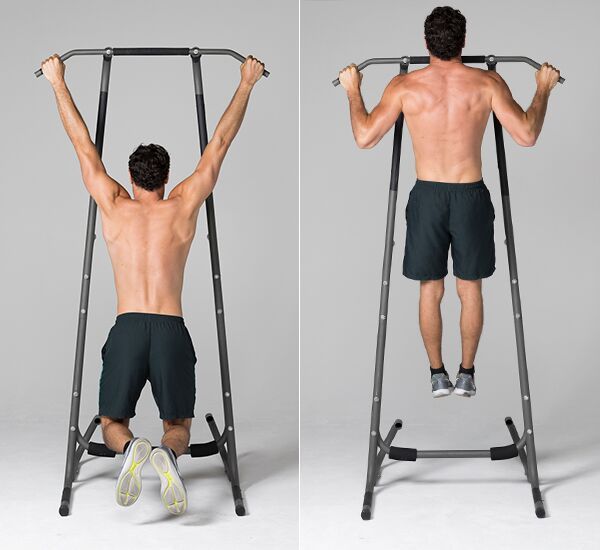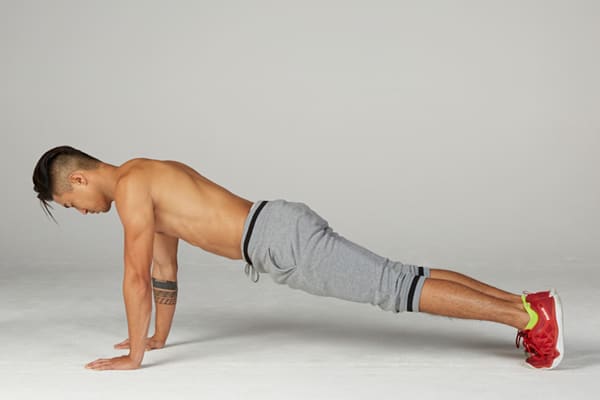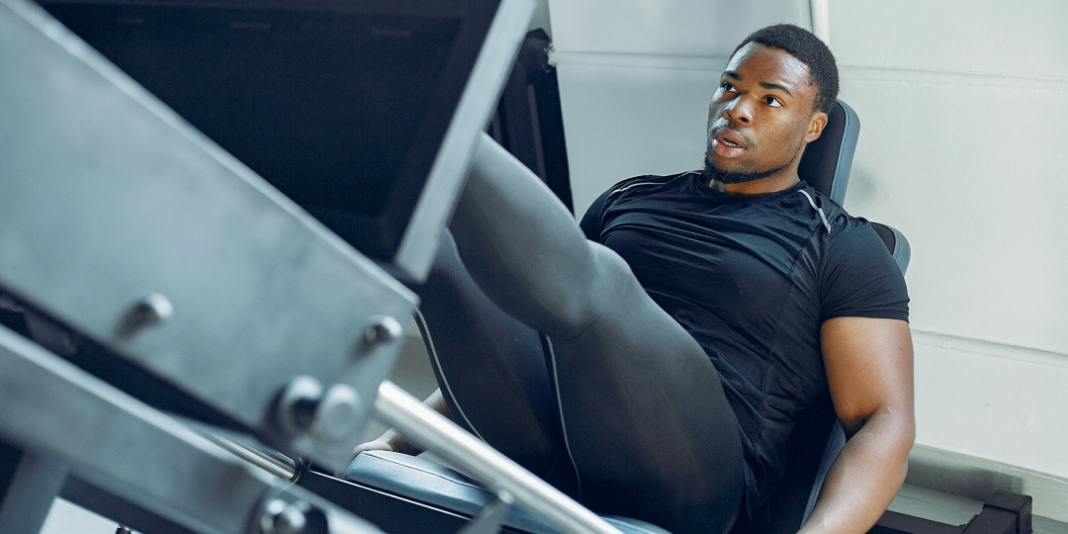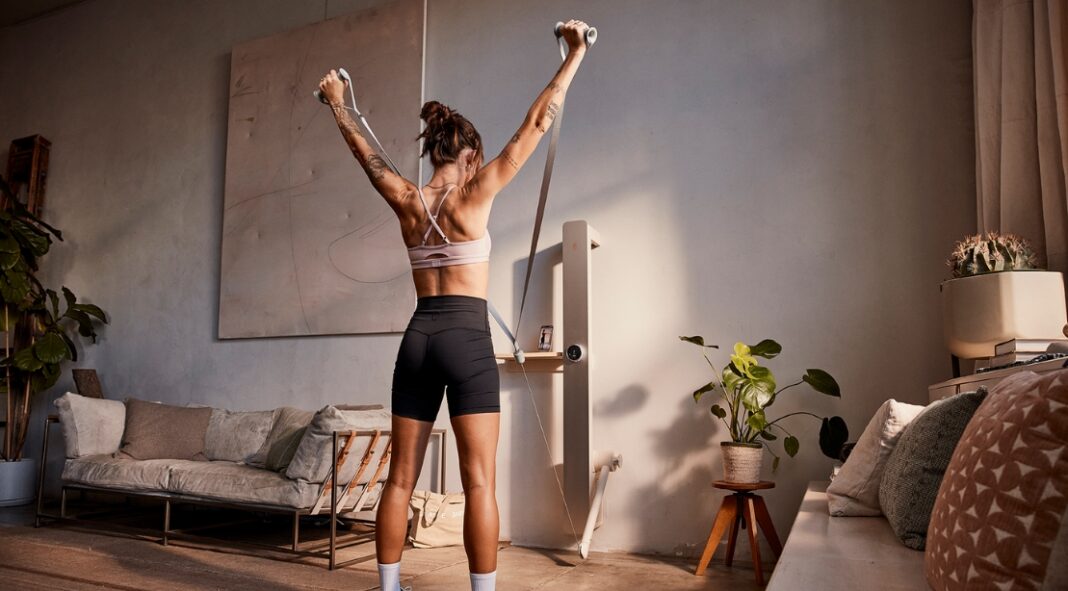If figuring out how to organize and manage your strength-training routine feels more challenging than a heavy set of deadlifts, it’s time to consider a push/pull/legs schedule. Popular among weightlifters of all levels, this divide-and-conquer approach to training designates specific days — push days, pull days, and leg days — for targeting different muscle groups.
Amanda Herrera, CPT, describes this type of training plan as “strategic,” as it allows you to build strength and muscle mass in all areas of the body with minimal rest. “It’s the idea of separating and working similar muscle groups on one day,” she explains.
“That way, on the following day, you’re training the opposing muscles and not overworking or overtraining your body. Sometimes in full-body workouts, some muscle groups get used in multiple exercises, and you don’t realize it, so they’re actually working more than you think,” she adds. “This push/pull/legs way of training is great to prevent injury for everyone.”
Below is an explanation of each type of day, sample exercises, and a straightforward seven-day schedule that can help provide structure to your workouts.
A push day workout is an upper body workout that targets the muscles used during pushing movements — primarily the triceps and the muscles of the chest and shoulders. Here are few common push exercises that require minimal equipment (you’ll need one set of dumbbells).
1. Push-up
- Assume a high-plank position with your feet together (or slightly apart for balance), your body straight from head to heels, and your hands in line with (but slightly wider than) your shoulders. Engage both your glutes and your core to lock your body into position.
- Keeping your elbows about 45-degrees away from your body and your head neutral, lower your torso until your chest is within a few inches of the floor.
- Pause, and then push yourself back up to the starting position.
2. Dumbbell lateral raise
- Stand tall with your feet hip-width apart holding a dumbbell in each hand at arm’s length by your sides, palms facing in.
- Keeping a slight bend at the elbow, raise your arms to your sides until they’re level with your shoulders. Keep your palms facing downward.
- Pause, and then lower the weights back to the starting position.
3. Dumbbell overhead triceps extension
- Sit on a bench or chair, cupping one end of a dumbbell in both hands directly overhead. This is the starting position.
- Keeping your chest up, core engaged, and back flat, bend the elbows to lower the weight behind your head without moving your upper arms. Elbows should stay close to the ears and be pointed forward.
- Pause, and then press the weight back up to the starting position.
A pull day workout engages the opposing upper body muscles: the biceps, forearms, and back muscles. The sampling of exercises below requires a set of dumbbells and a pull-up bar.
4. Dumbbell bent-over row
- Stand with your feet hip- to shoulder-width apart holding a dumbbell in each hand at arm’s length by your sides, palms facing in. Brace your core, hinge at your waist to push your hips back, bend your knees slightly, and lower your torso until it’s nearly parallel to the floor. Keep your glutes engaged to protect your lower back.
- Let the dumbbells hang at arm’s length with your palms facing each other. Engage your shoulder blades to keep your shoulders pulled back. This is the starting position.
- Without moving your torso, and while keeping your elbows tucked and back flat, row the weights to your rib cage as you squeeze your shoulder blades together. Make sure there’s a 90-degree bend in the elbow, so you’re rowing to your ribs and not armpits.
- Pause, and then lower the weights back to the starting position.
5. Zottman curl
- Stand tall, holding a dumbbell in each hand at arm’s length by your sides, palms facing forward (underhand grip).
- Keeping your elbows tucked and locked by your sides, curl the weights toward your shoulders.
- Rotate the dumbbells 180-degrees so your palms are now facing down. Lower the weights back down to your sides and then flip your grip again (to underhand) to return to the starting position.
6. Pull-up

- Grab a pull-up bar with an overhand grip that’s slightly wider than shoulder-width. Hang at arm’s length with your arms straight (a position known as a dead hang) and your ankles crossed behind you.
- Without swinging or kipping (using momentum to propel you upward), engage your lats and squeeze your shoulder blades together as you pull your chin to the bar.
- Pause, and then lower yourself back to a dead hang.
Legs and Core Day Workout
While leg day is typically devoted to strengthening the hamstrings, quadriceps, glutes, and calves, it’s common practice to also incorporate core work. Below are some bodyweight core exercises and basic lifts that target multiple muscle groups of the lower body.
7. Romanian deadlift
- Stand tall, feet hip-width apart and parallel, with your knees slightly bent, holding a pair of dumbbells in front of your thighs, palms facing towards you.
- Keeping your back flat, core engaged, and the dumbbells within an inch or two of your body, push your hips back and lower the dumbbells until your torso is nearly parallel to the floor.
- Pause, and then reverse the movement to return to the starting position.
8. Dumbbell squat
- Stand with your feet hip to shoulder-width apart, holding a pair of dumbbells at arm’s length by your sides, palms facing in.
- Keeping your back flat and core braced, push your hips back, bend your knees, and lower your body until your thighs are parallel to the floor.
- Pause, then push yourself back up to the starting position.
9. Bulgarian split squat
- Stand facing away from a bench, holding a pair of dumbbells at arm’s length by your sides, palms facing in. Place the toes of your left foot on the bench behind you.
- Keeping your torso upright, lower your body until your right thigh is parallel to the ground (don’t let your left knee touch it). The front knee should track right above the ankle. If it doesn’t, your distance from the bench needs to be adjusted.
- Pause, and then push back up to the starting position. Do equal reps on both legs.
10. Plank

- Assume a push-up position: get on all fours with your feet together (or slightly apart for more stabilization) and your body straight from head to heels.
- Make sure your wrists are directly beneath your shoulders.
- Squeeze your glutes and brace your core by drawing your belly button into the spine to lock your body into position. Hold for the specified amount of time.
11. Dead bug

- Lie on your back and seal the space between your back and the floor by pushing your back down. Bend your knees to 90 degrees and lift your feet from the floor. Your knees should be above your hips and shins parallel to the ground. Reach your arms straight to the ceiling.
- Lower your right arm behind your head and, at the same time, extend your left leg long in front of you. Hover both your arm and your leg off the mat.
- Return back to the starting position. Complete all reps before switching sides.
12. Double leg lift
- Lie on your back and extend your legs up to the ceiling with your toes pointed and heels together. Place your hands behind your head or place your fingertips on your ears and keep your elbows wide. Engage your abs to press your lower back into the floor. Lift your chest up to bring your shoulders off the floor.
- Inhale and lower your legs down with control. Only lower your legs as far as you’re able to without letting your lower back lift off the floor or your abdomen popping up.
- Once you’ve reached your end range of motion, exhale and lift your legs back to starting position with control.
7-Day Push/Pull/Leg and Core Routine
Ready to get started? The guidelines are simple: Alternate between push, pull, and leg workouts. Doing so offers your muscles a built-in rest period, so you don’t need to take days off (unless you want to). Here’s one sample schedule:
Monday: Push workout
Tuesday: Pull workout
Wednesday: Leg and core workout
Thursday: Push workout
Friday: Pull workout
Saturday: Leg and core workout
Sunday: Rest


